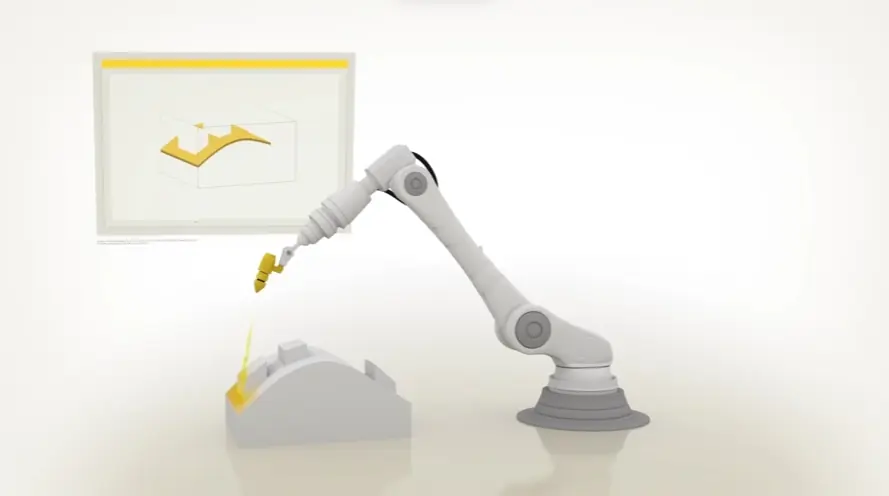
Key elements for a compelling 3D product demo?
Compelling demos blend clear messaging, strategic camera work, subtle animation, effective lighting, and impactful sound design.
How to craft a narrative for a 3D product video?
Craft a narrative that showcases the product's value, distilling complex information into an engaging story.
Ideal 3D animation style for my product demo?
Animation style should align with the product and brand. Consider options ranging from minimalist to photorealistic, choosing the aesthetic that best conveys the message.
Using existing assets when outsourcing 3D demo creation?
Leverage existing assets like CAD files, high-resolution images, and existing marketing materials to streamline production and reduce costs.
Best practices for showcasing features in a 3D product demo?
Showcase features using strategic camera angles, close-ups, exploded views, cutaways, and clear annotations to highlight functionality and benefits.
Optimal length for a 3D product demonstration?
Optimal length depends on complexity and target audience. Concise 60-second overviews suit social media, while detailed 3-5 minute demos are ideal for websites.
Integrating customer testimonials in 3D product videos?
Integrate customer testimonials to build trust and credibility. Short, impactful quotes from satisfied users can enhance the demo's persuasive power.
How are competitors using 3D product videos in their marketing?
Analyze competitor demos to identify best practices and differentiate your approach. Focus on unique selling points and innovative presentation techniques.
Leveraging the benefits of 3D vs. 2D product showcases?
3D offers interactive exploration, showcasing products from all angles, highlighting intricate details, and creating immersive experiences impossible with 2D.
Aligning 3D product videos with my marketing strategy?
Align the demo with marketing objectives. Define target audience, key message, and desired call to action to ensure the video supports overall marketing strategy.
Adapting a 3D product demo example for my product?
Adapt demo examples by focusing on the specific product's features and benefits. Tailor messaging and visuals to resonate with the target audience.
Essential pre-production steps for a 3D product visualization?
Essential pre-production steps include defining objectives, target audience, key message, script development, storyboarding, and asset gathering.
Making my 3D product visualization stand out?
A standout visualization utilizes innovative animation, strategic lighting, captivating sound design, and a clear, concise narrative.
Photorealistic or stylized rendering for my 3D product demo?
Photorealistic rendering suits products requiring high fidelity and detail, while stylized rendering offers creative flexibility and visual appeal.
Using animation to highlight features in my 3D product demo?
Animation highlights features by demonstrating functionality, emphasizing key details, and creating engaging visuals that capture attention. Pricing for a 60-second animation ranges from $1000-$6000 depending on complexity, with turnaround times typically between 3-8 weeks.
Mastering Photorealistic 3D Rendering Techniques
Achieving striking realism in showcasing products visually relies heavily on mastering technical rendering techniques. It moves beyond simple representation to simulating how light behaves in the real world, how materials react, and how subtle details appear under various conditions. This pursuit aims to create images nearly indistinguishable from photographs, providing viewers an incredibly lifelike preview of a product even before its physical creation.
A cornerstone of this fidelity is implementing Physically Based Rendering. This approach ensures surfaces like metals, plastics, and fabrics respond accurately to light sources, capturing nuances like reflectivity, roughness, and subsurface scattering with convincing authenticity. Complementing this is strategic model optimization. Techniques like managing polygon count, utilizing Level of Detail LOD systems for varying distances, and baking complex surface details into simple texture maps allow for intricate visuals without overwhelming computational resources, crucial for smooth playback.
Further enhancing the illusion of reality involves sophisticated lighting and camera control. Beyond basic setup, it means understanding how light bounces, creates soft shadows, and generates realistic reflections that interact with materials. Precise camera handling, including dynamic paths and settings emulating real-world lenses such as subtle depth of field, allows viewers to explore textures and fine details in a way that feels natural and immersive.
Apply Physically Based Rendering workflows for authentic material responses to light.
Implement effective model optimization strategies including LOD and normal mapping.
Design sophisticated lighting setups that mimic real-world light interactions.
Utilize camera framing and dynamic movement to showcase realistic textures and details.
Mastering these technical rendering aspects elevates a 3D Product Demonstration Video to an immersive visual experience.
Why Advids for 3D Product Demonstration Video?
At Advids, we specialize in creating high-quality, original 3D product demonstration videos that drive results and help you achieve your business objectives. We combine creative storytelling, cutting-edge technology, and a proven track record to transform your vision into compelling and effective animations.
Experience the Advids Advantage:
12+ Years of Proven Success: With over 3400 clients served, we possess a deep understanding of what makes a 3D product demonstration video truly effective. We've completed over 230 successful 3D product demonstration video projects.
Trusted by Industry Leaders: From startups to Fortune 500 companies, brands like Razorpay, Ola, Mercedes, the United Nations, Continental, and Mercer rely on our expertise to bring their product stories to life through engaging 3D demonstrations.
Client Satisfaction Guaranteed: Our commitment to excellence is reflected in over 109 five-star Google reviews, showcasing our talent, creativity, and dedication to client satisfaction.
Transforming Your Product Vision into Reality:
Customized 3D Product Demonstration Video Solutions: We tailor each project to your specific needs, whether you require explainer videos, interactive product tours, or detailed component breakdowns. We ensure your 3D product demonstration video perfectly reflects your brand, style, and target audience.
Cutting-Edge 3D Technology: We utilize industry-leading software and techniques to create visually stunning and impactful 3D product demonstrations that showcase your product's features and benefits in a captivating way.
Creative Storytelling Through Animation: Our skilled animators and storytellers craft compelling narratives that engage your viewers and drive conversions by highlighting the value and functionality of your product.
A Partnership Built on Collaboration:
Collaborative Process: We work closely with you throughout the entire process, from initial concept to final delivery, ensuring your vision is realized in the final 3D product demonstration video.
Strategic Communication: We prioritize clear and open communication, understanding your needs, target audience, and brand identity to create impactful 3D product demonstrations that resonate with your customers.
Ready to unlock the potential of 3D Product Demonstration Video for your business with the latest video design trends of 2024? Let Advids be your trusted partner in transforming your ideas into engaging and effective animated experiences.
Checkout some of the projects and work our team at Advids has been producing:
What is a 3D Product Demonstration Video?
A 3D product demonstration video is a type of video that uses 3D animation and modeling to showcase a product's features, benefits, and functionalities in a visually captivating and immersive way. These videos go beyond traditional product videos by offering viewers a realistic and interactive experience, allowing them to explore the product from different angles, zoom in on specific details, and witness its capabilities in action.
3D product demonstration videos are used across various industries, from showcasing complex machinery and software to presenting everyday consumer goods. They are particularly effective for businesses that need to communicate complex concepts, engage their target audience, and drive conversions.
What do top 3D Product Demonstration Videos have in common?
Mastering 3D product demonstration videos requires a strategic approach to visual storytelling and technical execution.
High-Fidelity 3D Models - Employ high-polygon counts and intricate details for realism. Showcase textures and surface imperfections.
- Detailed Product Specs - Use clear infographics and concise text overlays to highlight key specs. Prioritize data relevant to the target audience.
- Dynamic Product Animation - Use smooth transitions and strategic slow-motion to emphasize key features. Incorporate subtle animations to enhance engagement.
- Photorealistic Materials & Textures - Use physically based rendering (PBR) for accurate material behavior. Show material properties under various lighting conditions.
- Targeted Feature Highlights - Use callouts and visual cues to draw attention to specific features. Prioritize features that solve user problems.
- Compelling Camera Movement - Use smooth camera pans and zooms to guide the viewer's eye. Employ dynamic shots to maintain viewer interest.
- Strategic Lighting Design - Use realistic lighting to create depth and highlight product features. Employ shadows and highlights to enhance visual appeal.
- Contextual Environment Design - Create environments that are relevant to the product's use case. Use realistic props and backgrounds to enhance immersion.
- Problem-Solution Demonstration - Clearly define the problem and then show how the product solves it. Use before-and-after comparisons to highlight the impact.
- Authentic Use Case Scenarios - Show the product being used by real people in realistic situations. Use diverse characters and scenarios to broaden appeal.
What makes 3D Product Demonstration Video effective?
A clear objective drives the entire production process. They highlight the products value proposition by leveraging visual storytelling techniques to showcase user benefits in targeted scenarios. Strategic use of interactive elements, such as exploded views and customization options, enhances engagement.
User-centered design principles, incorporating iterative feedback and A/B testing, ensure impactful visuals. Deep understanding of the target audience informs all creative decisions. Compelling calls to action, tailored to different audience segments, drive conversions.
How long should your 3D Product Demonstration Video be?
Optimize 3D product demo video length by aligning video type, use case, and target funnel stage for maximum impact.
Pre-production Considerations for Determining Video Length:
- What's the video's core message?
- Who is the intended viewer?
- How many features are crucial?
- How intricate is the product?
- Which platform will host it?
- What style best suits the product?
- What's the marketing goal?
3D product demonstration video length guide
| 3D Product Demonstration Types | Video Length | Use Case | Funnel |
|---|
| Animated Explainer | 45-60 seconds | Clearly explains complex features using engaging visuals and concise narration, ideal for showcasing intricate mechanisms or functionalities. | Awareness |
| Live Action Demo | 30-45 seconds | Demonstrates product usage in a realistic setting, highlighting key benefits and user experience. A presenter interacts with the product. | Consideration |
| 360° Spin | 15-30 seconds | Provides a comprehensive view of the product from all angles, emphasizing design and aesthetics. Uses a clean, minimalist style. | Awareness/Consideration |
| Exploded View | 45-75 seconds | Shows the product's internal components and how they work together, ideal for technical products. Uses realistic rendering. | Consideration/Decision |
| Product Showcase | 60-90 seconds | Presents the product's key features and benefits in a visually appealing manner, suitable for highlighting multiple aspects. Multiple visual styles can be used. | Consideration/Decision |
How to create 3D Product Demonstration videos?
Mastering 3D product demonstration videos requires a strategic approach that prioritizes audience understanding and impactful visuals, resulting in a compelling narrative that drives engagement and conversions.,,To create truly effective 3D product demonstration videos, you must prioritize a deep understanding of your target audience and a compelling narrative that showcases the product's value proposition.
* Target audience analysis - Focus on user personas, their tech proficiency, and their expectations to tailor the demo perfectly.- Narrative Development - Use a problem/solution approach. Show the pain point, then demonstrate how the product solves it elegantly.
- Storyboard Creation - Use detailed storyboards to pre-visualize every camera angle and animation, minimizing costly revisions.
- Style Selection - Match the style to the product's brand and target audience. A sleek, modern product needs a modern style.
- Asset Acquisition - Source high-resolution assets. Poor quality assets will severely impact the final video's quality.
- 3D Modeling - Use realistic materials and textures to make the product look photorealistic and appealing.
- Rigging & Animation - Use smooth, natural animations that clearly demonstrate the product's functionality.
- Rendering & Lighting - Employ advanced rendering techniques and realistic lighting to create a high-impact visual experience.
- Camera Setup - Use dynamic camera angles and movements to keep the viewer engaged and highlight key features.
- Final Compositing - Use subtle visual effects to enhance the product's appeal without distracting from its core functionality.
Measuring the ROI of 3D Product Videos
Let's talk about measuring the success of our 3D product videos. We've invested time and resources into creating compelling visuals, but how do we know if they're truly effective? Understanding the return on investment (ROI) is key to refining our strategies and maximizing impact. It's not just about creating stunning visuals; it's about achieving tangible results.
Measuring ROI isn't about guesswork; it's about data-driven analysis. By tracking key metrics, we can gain valuable insights into audience behavior and video performance. Think of it like this: we're detectives gathering evidence to solve the mystery of what makes a video successful. For instance, a high watch time for a 3D product explainer video suggests viewers are engaged with the content, while a low conversion rate might indicate a need to refine our call to action.
- Analyze website performance: See how our videos influence website traffic and conversions. Are viewers clicking through to product pages? Are they making purchases? These metrics tell us if our videos are driving desired actions.
- Monitor engagement: Dive into metrics like watch time, likes, shares, and comments. High engagement suggests our content resonates with the audience, while low engagement might signal a need for adjustments. For software products, exploring 3D product video examples for software can offer valuable insights.
- Gather feedback: Don't underestimate the power of direct feedback. Surveys and comments provide valuable insights into what viewers like and dislike about our videos. This information can help us refine our approach and create even more effective content.
- Assess long-term impact: 3d product videos can have a lasting impact on brand perception. While immediate metrics like conversions are important, consider the long-term effects on brand awareness and customer loyalty. Looking at top 3D product animation examples can inspire us to create videos that leave a lasting impression.
By consistently analyzing these metrics and adapting our strategies, we can ensure our 3D product videos deliver a strong return on investment and contribute to our overall marketing success.
The 3D Product Video Production Process
Having explored the fundamentals, let's walk through the actual production process of a 3D product demo video. Creating engaging 3D product video examples involves more than just technical expertise; it's about weaving a compelling narrative that resonates with your audience. We'll navigate this journey together, highlighting key steps and practical insights.
Think of this process as building a house. We start with a blueprint (script), gather materials (assets), and assemble the structure (animation and rendering). Along the way, we add finishing touches (sound and editing) to create a polished final product. Let's dive into the key stages of bringing your 3D product visualizations to life.
Imagine soaring through your product with stunning 3D product flythroughs, offering viewers an immersive exploration of its design and functionality.
- Pre-production: This phase lays the groundwork for success. We define project scope, target audience, and core message, crafting a compelling script that showcases product benefits. Creating a style guide ensures visual consistency and brand alignment. Storyboarding and pre-visualization help us plan shots, camera angles, and animation sequences, minimizing costly revisions down the line.
- Production: This is where the magic happens. We build high-fidelity 3D models with realistic textures and materials. Rigging and animation bring these models to life, showcasing product functionality with smooth, dynamic movements. Realistic lighting and rendering enhance visual appeal, highlighting intricate details. We also incorporate sound design and music to create an immersive viewing experience.
- Post-production: Here, we polish and refine our creation. Professional voiceover recording and editing add clarity and authority. Video editing and compositing seamlessly integrate all elements into a cohesive final product. We gather client feedback and make necessary revisions to ensure alignment with project goals. Finally, we optimize the video for various platforms and prepare for its launch.
Creating compelling product demo video examples 3D requires a strategic blend of creativity and technical expertise. By following these steps, we can transform complex product information into engaging visual stories that captivate audiences and drive results. From initial concept to final delivery, each stage plays a crucial role in crafting a video that effectively communicates your product's value.
Integrating 3D Videos into Marketing Campaigns
Having explored the art of crafting compelling 3D product videos, let's shift our focus to their strategic deployment within our marketing ecosystem. Think of these videos as powerful tools, ready to elevate our campaigns and drive tangible results. It's not just about creating stunning visuals; it's about integrating them seamlessly into our marketing strategies to maximize their impact.
Imagine a potential customer landing on your product page, greeted by a captivating 3D product walkthrough video example. They can instantly visualize the product in action, exploring its features and benefits without ever leaving the page. Or picture a targeted ad campaign featuring a dynamic 3D product marketing video, capturing attention amidst the social media noise. These are just glimpses of the potential that awaits.
Let's dive into some key strategies for integrating 3D product videos into our marketing arsenal:
- Website Integration: Transform your product pages into immersive experiences by embedding 3D product walkthroughs. Allow customers to explore every angle and detail, fostering a deeper understanding and connection with your offerings.
- Social Media Engagement: Unleash the power of 3D product demo video examples on social media platforms. Craft short, engaging snippets that highlight key features and drive traffic back to your website.
- Email Marketing Enhancement: Inject new life into your email campaigns by incorporating captivating 3D product videos. A visually compelling video can significantly increase click-through rates and drive conversions.
- Paid Advertising Amplification: Maximize your reach and impact by incorporating 3D product marketing videos into your paid advertising campaigns. capture attention and drive qualified leads with visually stunning content.
By strategically weaving 3D product videos into our marketing tapestry, we empower ourselves to connect with our audience on a deeper level, driving engagement, conversions, and ultimately, business growth.
Understanding 3D Animation Software
Having explored the essentials of 3D product demos, let's navigate the world of 3D animation software. Choosing the right software is like selecting the perfect brush for a masterpiece – it directly impacts the final result. We'll equip you with the knowledge to make informed decisions, ensuring your software aligns perfectly with your project's vision and resources.
Think of software selection as finding the right tool for the job. Do you need the versatility of a Swiss Army knife like Blender, perfect for diverse 3D product animations, or the precision of a scalpel like ZBrush, ideal for intricate detailing in high-quality 3D product videos? Let's explore the key factors to consider.
- Software Categories: From general-purpose giants like Blender, offering a vast toolkit for various 3D animation product video examples, to specialized software like ZBrush, tailored for sculpting and high-polygon modeling, the options are diverse.
- Key Features: Look for essential features like modeling, rigging, animation, and rendering. Software like Maya is renowned for its robust animation tools, while Cinema 4D shines with its intuitive interface, making it ideal for creating engaging animated product demos.
- Hardware & System Requirements: Consider your hardware capabilities. Demanding software like 3ds Max might require a powerful workstation with a high-end GPU and ample RAM to handle complex scenes and deliver stunning visuals.
- Resources & Community: A strong community and readily available tutorials can be invaluable, especially when starting with new software. Blender, for instance, boasts a large and active community, providing ample support and learning resources.
Choosing the right software is an investment in your project's success. By carefully considering these factors, you can empower yourself to create captivating 3D product visualizations that truly resonate with your audience.
Incorporating Brand Identity in 3D Videos
Now that we've covered the technical nuts and bolts, let's elevate our 3D product demos by infusing them with our unique brand identity. This isn't just about slapping a logo on the screen; it's about weaving our brand's DNA into every pixel, creating a cohesive and memorable experience. Think of professional 3D product video examples – the best ones seamlessly blend product showcasing with powerful brand storytelling.
Imagine a sleek, minimalist 3D product showcase for a tech company, using a cool color palette and futuristic sound design. Or picture a vibrant, playful animation for a children's toy, bursting with bright colors and cheerful music. These are examples of how branding can transform a simple product demo into a compelling brand experience.
- Color and Typography: Start with the basics. Use your brand's color palette and typography to create instant visual recognition. This creates a sense of familiarity and reinforces your brand presence.
- Visual Style and Music: Match the video's overall style and music to your brand's personality. A luxury brand might opt for elegant visuals and sophisticated music, while a sporty brand might choose dynamic camera angles and energetic beats.
- Storytelling and Emotion: Don't just show your product; tell a story. Connect with your audience on an emotional level by showcasing how your product solves their problems and improves their lives. This creates a deeper connection and fosters brand loyalty.
- Subtlety is Key: Remember, subtlety is key. Integrate your logo and other branding elements tastefully, avoiding overwhelming the viewer. The goal is to enhance the viewing experience, not distract from it.
By following these tips, you'll create 3D product demo videos that not only showcase your product effectively but also strengthen your brand image, leaving a lasting impression on your audience. This is how we create some of the best 3D product demo videos.
Author & Editor Bio
A video producer with a passion for creating compelling video narratives, Jai Ghosh brings a wealth of experience to his role. His background in Digital Journalism and over 11 years of freelance media consulting inform his approach to video production. For the past 7 years, he has been a vital part of the Advids team, honing his expertise in video content planning, creation, and strategy.
His collaborative approach ensures that he works closely with clients, from startups to enterprises, to understand their communication goals and deliver impactful video solutions. He thrives on transforming ideas into engaging videos, whether it's a product demo, an educational explainer, or a brand story.
An avid reader of modern marketing literature, he keeps his knowledge current. Among his favorite reads from 2024 are "Balls Out Marketing" by Peter Roesler, "Give to Grow" by Mo Bunnell and "For the Culture" by Marcus Collins. His results-driven approach ensures that video content resonates with audiences and helps businesses flourish.





